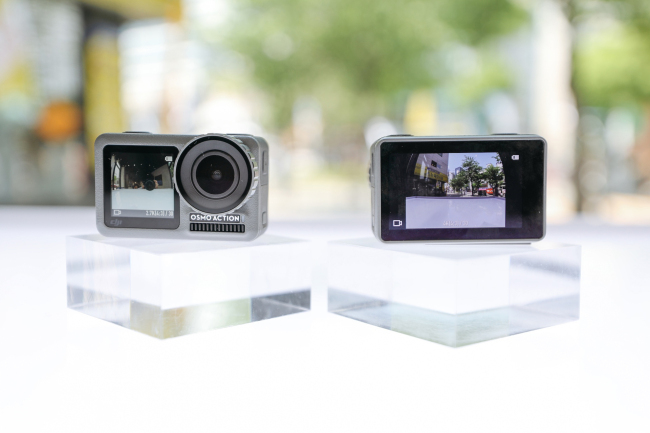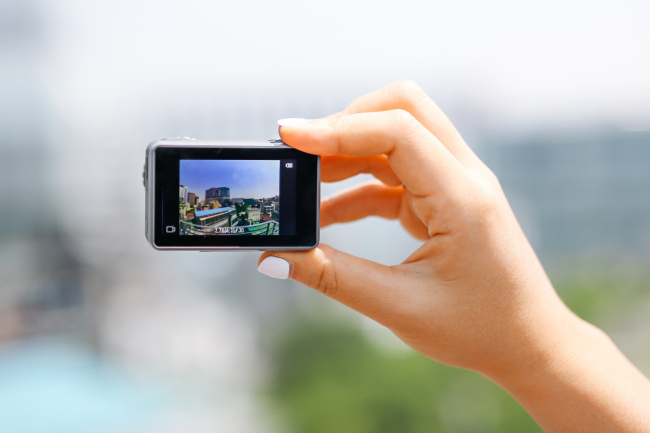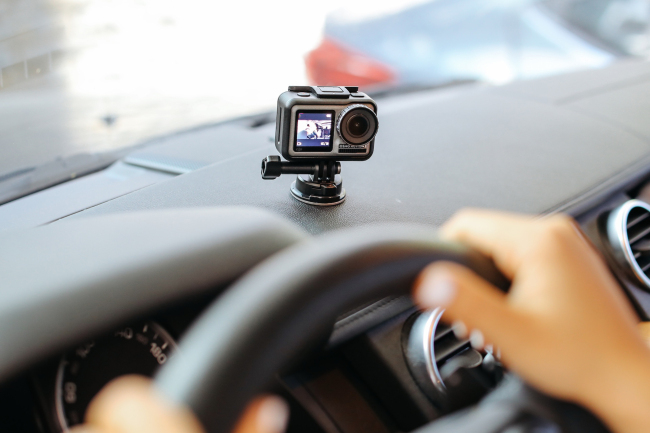Drone company DJI announced its first action camera Osmo Action on Wednesday equipped with a 3.5-centimeter front screen which makes “vlogging and selfies much easier.”
“The action cam market is shifting. Previously, the target users were people passionate about outdoor sports. But now, there are more users whose dream is to run a one-person media, or who habitually record their daily life,” said Senior Communications Manager Suk Gee-hyun, underscoring the benefits of Osmo Action’s selfie-mode feature.
“The action cam market is shifting. Previously, the target users were people passionate about outdoor sports. But now, there are more users whose dream is to run a one-person media, or who habitually record their daily life,” said Senior Communications Manager Suk Gee-hyun, underscoring the benefits of Osmo Action’s selfie-mode feature.

Weighing 124 grams, it has a 5.7-centimeter rear touchscreen with fingerprint repelling coating, withstands drops from 1.5 meters, is waterproof up to 11 meters underwater and has the ability to operate in subfreezing temperatures of minus 10 degrees Celsius. The camera is priced at 459,000 won ($386).
It is the first DJI camera decked with Electronic Image Stabilization technology, which captures movements smoothly even when recording in 4K at 60 frames per second. DJI calls its original EIS technology RockSteady.
The camera can film in eight-times slow motion in 1080 pixels and 240 fps, or four-times slow motion in 1080p and 120 fps. It can also shoot superspeed time-lapse films.
Osmo Action’s removable battery can last for 93 minutes when recording at 4K/30 fps with RockSteady enabled, and 135 minutes when recording at 1080p/30 fps without RockSteady.
When paired with DJI Mimo app, it can transfer images and videos to mobile devices over Wi-Fi or Bluetooth connection. Social media live broadcasts or quick in-app auto video editing is also possible.


“We have always pushed the limits of technology, and the content creators who love our products made it clear they wanted us to push the limits of their creative potential too. Osmo Action is our cutting-edge answer to what the creative community demands,” said DJI President Roger Luo.
DJI started out in 2011 as Shenzhen Dajiang Innovation, as a drone parts manufacturer. As it accumulated expertise in drones, the company rebranded itself as a pioneering aerial videography gadget producer.
To stabilize the images captured in the air, DJI developed three-axis mechanical gimbal for its drones, with the exception of Spark, its smallest drone that has two-axis gimbal.
The company later took out the gimbal from drones and applied it to handheld cameras, expanding its presence to land.
By Lim Jeong-yeo (kaylalim@heraldcorp.com)








![[KH Explains] Hyundai's full hybrid edge to pay off amid slow transition to pure EVs](http://res.heraldm.com/phpwas/restmb_idxmake.php?idx=644&simg=/content/image/2024/04/18/20240418050645_0.jpg&u=20240419100350)






![[From the Scene] Monks, Buddhists hail return of remains of Buddhas](http://res.heraldm.com/phpwas/restmb_idxmake.php?idx=652&simg=/content/image/2024/04/19/20240419050617_0.jpg&u=20240419175937)

![[KH Explains] Hyundai's full hybrid edge to pay off amid slow transition to pure EVs](http://res.heraldm.com/phpwas/restmb_idxmake.php?idx=652&simg=/content/image/2024/04/18/20240418050645_0.jpg&u=20240419100350)

![[Today’s K-pop] Illit drops debut single remix](http://res.heraldm.com/phpwas/restmb_idxmake.php?idx=642&simg=/content/image/2024/04/19/20240419050612_0.jpg&u=)